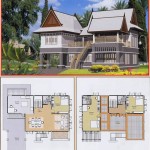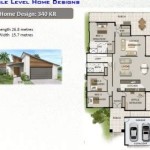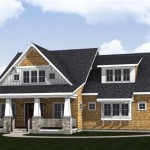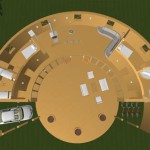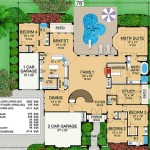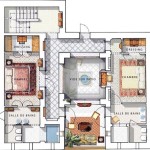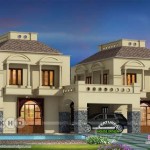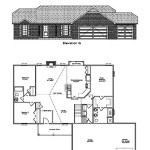Houseboat Plans: Design Considerations for Floating Homes
Houseboat plans represent a unique intersection of architectural design and nautical engineering. The construction of a houseboat, unlike traditional land-based housing, demands a comprehensive understanding of buoyancy, stability, and the specific challenges imposed by a marine environment. Successful houseboat design requires careful consideration of several factors, including the size and layout of the living spaces, the materials used in construction, the propulsion system (if any), and the waste management system. A well-executed plan ensures not only comfortable living but also the long-term structural integrity and safety of the vessel.
The initial phase of houseboat design involves determining the intended purpose and scope of the vessel. Is it intended for full-time residential use, or primarily for recreational purposes? Will it be permanently moored in one location, or designed for frequent cruising? Answers to these questions will significantly influence the size, layout, and features of the houseboat. A houseboat intended for full-time living, for example, will require more extensive living spaces, including a fully equipped kitchen, multiple bedrooms, and adequate storage. It would also necessitate a robust waste management system and potentially solar power for energy independence. Conversely, a recreational houseboat may prioritize outdoor spaces and simplified amenities.
Furthermore, local regulations play a crucial role in houseboat design. Many jurisdictions have specific requirements concerning the size, construction materials, and waste disposal systems of houseboats. These regulations may vary depending on the specific location and the intended use of the vessel. Before commencing any design work, it is imperative to thoroughly research and understand the applicable regulations to ensure compliance and avoid potential legal issues.
Key Point 1: Hull Design and Stability
The hull is the foundational element of any houseboat, providing buoyancy and stability. The design of the hull directly impacts the overall performance and safety of the vessel. There are several hull design options to consider, each with its own advantages and disadvantages. A common approach is the pontoon hull design, which consists of two or more parallel pontoons that provide substantial buoyancy and stability. Pontoon hulls are relatively simple to construct and offer excellent stability, making them a popular choice for houseboats. However, pontoon hulls may not be as efficient in the water as other designs, and they can be more susceptible to wave action.
Another option is a displacement hull, which is a more traditional boat hull shape designed to smoothly cut through the water. Displacement hulls provide a more comfortable ride in choppy waters and are generally more fuel-efficient than pontoon hulls. However, displacement hulls typically offer less interior space and may be more complex to construct. The selection of a hull design must take into account the intended use of the houseboat, the prevailing water conditions, and the desired balance between stability, efficiency, and interior space.
The structural integrity of the hull is paramount. The hull must be capable of withstanding the constant stresses imposed by the water, including wave action, currents, and the weight of the superstructure. Selecting the appropriate construction materials is critical. Common materials for houseboat hulls include aluminum, steel, and fiberglass. Aluminum offers a good balance of strength and weight, while steel is exceptionally strong and durable. Fiberglass is lightweight and resistant to corrosion but may not be as structurally strong as aluminum or steel. The chosen material must be carefully selected based on its properties and the specific demands of the hull design. Proper welding or bonding techniques are essential to ensure that the hull is watertight and structurally sound.
Stability calculations are a crucial aspect of hull design. Naval architects use specialized software and formulas to determine the stability characteristics of the hull. These calculations take into account the weight distribution of the houseboat, the shape of the hull, and the expected loading conditions. The goal is to ensure that the houseboat is stable under a variety of conditions and that it will not capsize easily. Stability calculations should be reviewed and approved by a qualified naval architect before construction begins.
Key Point 2: Space Planning and Interior Design
The interior space of a houseboat presents unique design challenges. Unlike land-based homes, houseboats have limited square footage and must accommodate all the necessary living spaces within a compact footprint. Efficient space planning is essential to maximize the usability and comfort of the interior. The layout should be carefully considered to ensure a logical flow between different areas, such as the kitchen, living room, bedrooms, and bathrooms.
Maximizing natural light is also a key consideration. Large windows and skylights can create a bright and airy interior, making the space feel more open and spacious. Strategically placed windows can also offer stunning views of the surrounding water. However, it is important to balance natural light with privacy and energy efficiency. Blinds, curtains, or tinted windows can be used to control sunlight and maintain privacy.
Storage is another critical aspect of interior design on a houseboat. Due to the limited space, it is important to incorporate ample storage solutions. Built-in cabinetry, under-bed storage, and multi-functional furniture can help to maximize storage space without cluttering the interior. Vertical storage solutions, such as shelves and hanging racks, can also be used to utilize wall space effectively.
The selection of interior materials should also be carefully considered. Materials that are durable, water-resistant, and easy to clean are ideal for a marine environment. Common materials used in houseboat interiors include marine-grade plywood, vinyl flooring, and stainless steel fixtures. These materials are resistant to moisture damage, mold growth, and corrosion. The interior design should also reflect the overall aesthetic of the houseboat. Whether the desired style is modern, rustic, or traditional, the interior design should create a comfortable and inviting living space.
Key Point 3: Essential Systems: Plumbing, Electrical, and Waste Management
Houseboats require several essential systems to function properly, including plumbing, electrical, and waste management systems. These systems must be carefully designed and installed to ensure the safety and comfort of the occupants, as well as to comply with environmental regulations.
The plumbing system must provide a reliable source of fresh water for drinking, cooking, and bathing. This typically involves a water tank, a water pump, and a network of pipes that distribute water throughout the houseboat. A water filtration system may also be necessary to ensure the purity of the water. The plumbing system must also include a water heater for providing hot water. Proper insulation of the pipes is essential to prevent freezing in cold climates.
The electrical system must provide power for lighting, appliances, and other electrical devices. This can be achieved through a combination of shore power, generators, and solar panels. Shore power is typically used when the houseboat is docked at a marina, while generators and solar panels can provide power when the houseboat is away from shore. The electrical system must be properly grounded and protected by circuit breakers to prevent electrical shocks and fires. The wiring should be marine-grade and resistant to corrosion.
The waste management system is a critical aspect of houseboat design. It must safely and effectively dispose of both blackwater (sewage) and greywater (water from sinks, showers, and laundry). Blackwater must be stored in a holding tank and then pumped out at a designated facility. Greywater can be treated and discharged into the water in some jurisdictions, but this is subject to strict regulations. A composting toilet is an alternative to a traditional flush toilet that can reduce the amount of water used and the volume of waste that needs to be stored. The waste management system must be designed to prevent pollution and protect the environment.
In addition to these essential systems, houseboats may also require other systems, such as heating, ventilation, and air conditioning (HVAC). These systems can help to maintain a comfortable indoor environment in all types of weather. The selection and design of these systems will depend on the climate in which the houseboat will be used and the preferences of the owner.
The careful integration of these three key points – hull design and stability, space planning and interior design, and essential systems – is pivotal for creating a successful and enjoyable houseboat living experience. Overlooking any of these areas can lead to functional limitations, safety concerns, or environmental issues. The integration must also consider the long-term maintenance and operational costs associated with each design choice.
Finally, it is highly recommended to engage with experienced professionals, such as naval architects and experienced houseboat builders, throughout the design and construction process. Their expertise can help to ensure that the houseboat is safe, seaworthy, and meets all applicable regulations. Detailed plans, including structural drawings, electrical schematics, and plumbing diagrams, are essential for guiding the construction process and ensuring that the houseboat is built to the highest standards.

Best Simple Houseboat Plan House Boat Small Houseboats Trailerable

House Boat Holidays Ltd Floor Plans Building Wood

Houseboat Plans Aqua Casa Cape Codder Wooden Boat

Home Office House Boat Plans Designs Building

Houseboats Funboats Pontoon Boats Plans For U Boat Building

Custom Houseboat S And Manufacturing Floorplans

Custom Houseboat S And Manufacturing Floorplans

Free Houseboat Plans And Designs For Building A House Boat Or Pontoon

Custom Houseboats Build Your Houseboat

Yes With House Boat Plans You Can Build Your Own Houseboat

